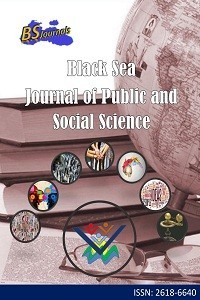A Viewpoint toward Second Houses in Rural Regions of Iran: Situations and Problems
A Viewpoint toward Second Houses in Rural Regions of Iran: Situations and Problems
Second houses, Tourism, Rural, Effects, Development, Sustainable Iran,
___
- Akpinar N, Talaycos I, Ceylan K, Gunduz S. 2004. Rural women and agrotourism in the context of sustainable rural development: a case study from Turkey. Kluwer Journal, 6: 473–486.
- Alipour H, Olya HGT, Hassanzadeh B, Rezapouraghdam H. 2017. Second home tourism impact and governance: Evidence from the Caspian Sea region of Iran. Ocean & Coastal Management, 136: 165 – 176.
- Alitajer S, Nojoumi GM. 2016. Privacy athome:Analysis of behavioral patterns in the spatial configuration of traditional and modern houses in the city of Hamedan based on the notion of space syntax. Frontiers of Architectural Research, 5: 341–352.
- Asgary A, Rezvani MR, Mehregan N. 2011. Local residents’ preferences for second home tourism development policies: A choice experiment analysis. Tourismos, 6(1): 31–51.
- Baboli FBM, Ibrahim N, Sharif DM. 2015. Design characteristics and adaptive role of the traditional courtyard houses in the moderate climate of Iran. Procedia - Social and Behavioral Sciences, 201: 213 – 223.
- Bureau of Farming lands Affairs. 2017. Jihad-Agriculture organization of South Khorasan province, Iran.
- Golmohammadi F. 2013. Studying effects of second houses and rural tourism on sustainable development in Iran. (Case study: South Khorasan Province). Tech J Eng Appl Sci, 3: 1919–1953.
- Khajehzadeh I, Vale B, Yavari F. 2016. Comparison of the traditional use of court houses in two cities. International Journal of Sustainable Built Environment, 5: 470–483.
- Mahdavi M. Ghadiri MM, Ghahramani N. 2008a. The affects of tourism on rural development with looking at Suleghan & Kan valley villagers. Village and Development Quarterly, 11(2): 39-60.
- Mahdavi M, Ghadiri MM, Sanaee M. 2008b. The role and impact of secondary houses on economical and social structure of Kelardasht. Human Geography Research Quarterly, 65: 19-52.
- Fans MVS, Fierro JAM, Patino MG. 2011. Rural tourism: A sustainable alternative. Applied Energy, 88: 551-557.
- Raheb G, Alalhesabi M. 2008. Verifying and evaluating critical factors for rural housing construction based on vernacular culture in Iran. International Conference on Multi-National Construction Projects “Securing high Performance through Cultural Awareness and Dispute Avoidance”, November 21-23, 2008, Shanghai, China.
- Soflaei F, Shokouhian M, Zhu W. 2017. Socio-environmental sustainability in traditional courtyard houses of Iran and China. Renewable and Sustainable Energy Reviews, 69: 1147–1169.
- URL1: w.kh.ir/detail/403525abaronline (Acces date: 12.01.2018).
- URL2: http://www.tabnak.ir/fa/news/493666/ (Acces date: 12.01.2018).
- Zhang XM. 2012. Research on the development strategies of rural tourism in suzhou based on SWOT Analysis. Energy Procedia, 16: 1295 – 1299.
- Yayın Aralığı: Yıllık
- Başlangıç: 2018
- Yayıncı: Sevtap TIRINK
1980 SONRASI UYGULANAN YÖNETİCİ ATAMA ÖLÇÜTLERİNE YÖNELİK YÖNETİCİ VE ÖĞRETMEN GÖRÜŞLERİ
Relationship of the development process with social capital, Case study: the Ahmadinejad government
SHEEPNET KOYUNLARDA VERİMLİLİĞİ ARTTIRMAK İÇİN ÇÖZÜMLERİ PAYLAŞIYOR
SHEEPNET: AVRUPA BİLGİ PAYLAŞIMI
Job Burnout and Social Problem Solving Skills at School of Foreign Languages
A Viewpoint toward Second Houses in Rural Regions of Iran: Situations and Problems
